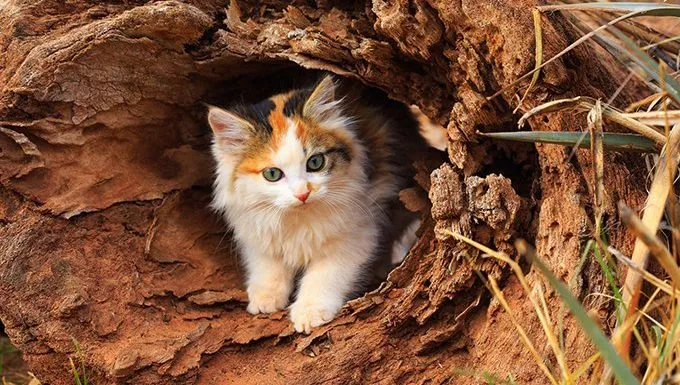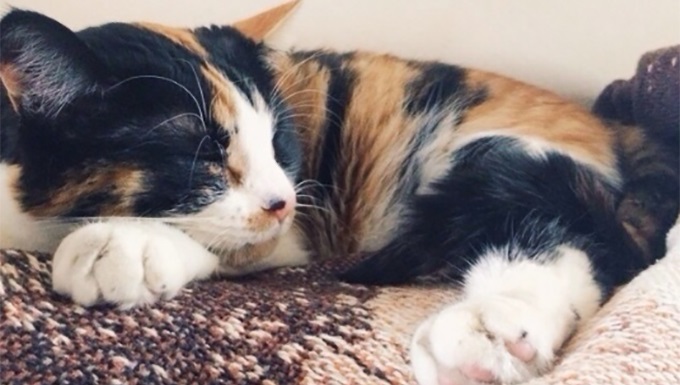
When I adopted a calico kitten, Pookie, several years ago, I didn’t think twice about the fact that she’s female. I wanted to get a female cat, and Pookie was adorable and fit with my personality, so that was that.
As I talked to fellow calico cat parents, I noticed every single one of their calicoes was also female. This was surprising to me — was there really no such thing as a male calico cat?
According to the Humane Society, only one in about three thousand calico cats is male. But why are male calicoes so rare? I did some investigating to find out why calico cats are almost always female.
What Is A Calico Cat?
To start this investigation, it’s important to point out that “calico” is a color pattern of a cat, not a breed. This eliminates a breed specific reason for a female majority of calicos.
In fact, any breed of cat can be born with calico fur; although, it’s rarer for purebreds like, say, Russian Blues.
In order for a cat to be considered “calico,” three colors must be present in the coat: white, black, and orange. There is room for variation in color, with cream, grays, and ginger.
What gives a calico cat this beautiful fur pattern? The answer lies within the cat’s chromosomes.
Chromosomes & Calicoes

Just like with humans, female cats have two X-chromosomes, one from the mother and one from the father, while male cats have an X-chromosome (from the mother) and a Y-chromosome (from the father).
In short, female cats have two X-chromosomes and male cats have one X-chromosome and one Y-chromosome.
In cats, the X-chromosome is the decider on a majority of the cat’s fur color. Since a male cat only has one X-chromosome from his mother, his fur color is dictated by that gene.
When a female cat is in fetal development, one of her two X-chromosomes is randomly deactivated, which is known as X-inactivation, for each cell. It’s important to remember that these deactivations are random and are not the same for each cell.
For example, one cell may shut off the X-chromosome that reads “orange fur,” while another cell may shut off the X-chromosome that reads “black fur.”
These random deactivations create either a tortoise shell pattern or calico pattern for the cat’s fur. White fur is determined with a separate gene and may speckle throughout the coat.
Since white fur is not dictated by chromosomes, this is why you can see male cats with duo-colored coats, such as a tuxedo cat, but not a calico.
How Do Male Calicoes Exist At All?
Given that a cat needs two X-chromosomes in order to have a calico coat, how can one out of three thousand calico cats be male?
A male cat can have tri-colored fur if he inherits an extra X-chromosome, making his genetic makeup XXY as opposed to XY. This cat is almost always male, despite the extra X-chromosome.
If you spot a male calico, it’s highly likely that this cat is sterile, or unable to reproduce. Out of the 1 in 3,000 calicoes that is male, only 1 in 1,000 of those is actually virile.
Breeders still tend to shy away from these fertile male calicoes, as there are potential health issues that can arise in their offspring due to the extra chromosome.
So the next time you meet a calico, you may want to ask what her name is. And if it’s an all orange cat? Chances are he’s male.
Do you have a calico cat at home? Have you ever met a male calico, the unicorn of cats? Let us know in the comments below!









